OUTLINE
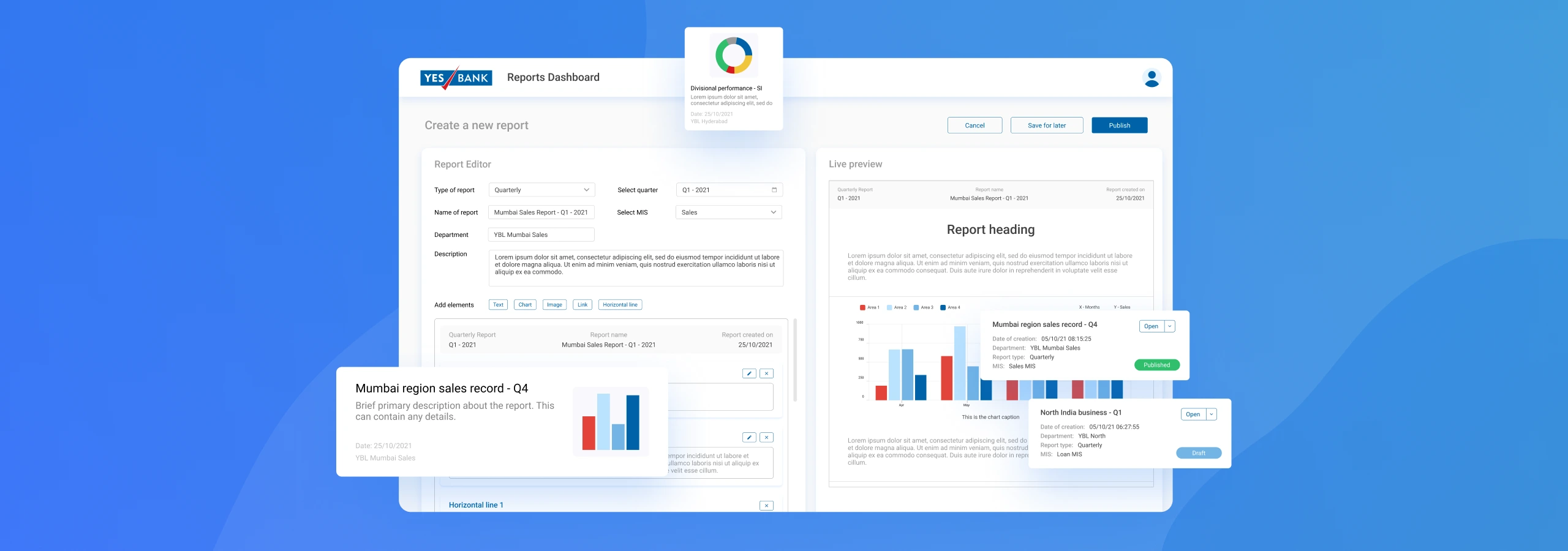
Yes Bank
Designing a CMS solution for Documentation and Reporting
My Role
Senior UX Designer (2021, 3 months)
Status
v1 launch was planned for Q1-2022
Background
Yes Bank, as a large organization, follows established processes for organizing documentation and communication among stakeholders. Associates regularly email reports and documents to colleagues and upper management as part of daily operations.
However, this process faces usability and technological challenges given the organization's scale. These documents are crucial for decision-making across the operation. Our team collaborated with Yes Bank to design a user-friendly product to address this issue.
Problem definition
After stakeholder discussions and interviews, we identified two primary user personas impacted by these issues. These personas correspond to two specific documentation workflow activities: creation and consumption.
Creators are focused on generating reports and documents to convey information, whereas Consumers or Readers utilize this information to influence their activities. For simplicity and rapid development, these user archetypes will be our main focus for the initial design iteration and testing.
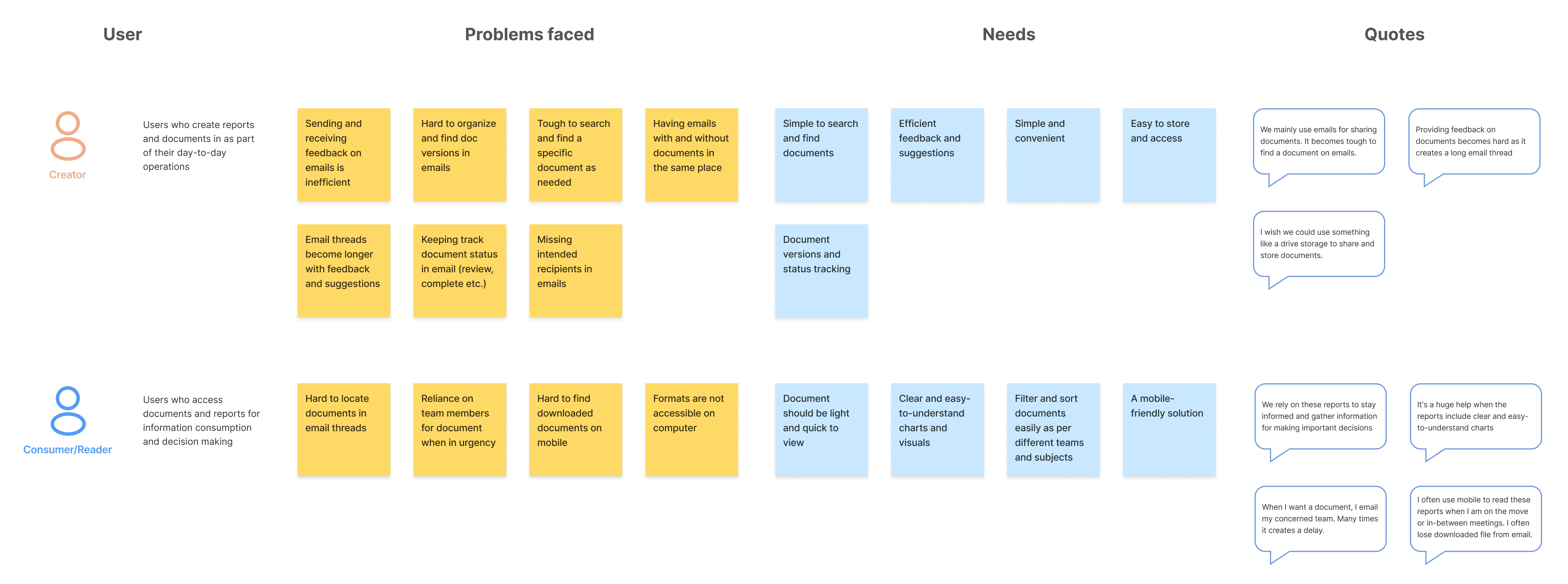
Exploring needs and opportunities
To gain a comprehensive understanding of the user requirements, challenges, frustrations, and expectations, a series of five interview sessions were conducted with the users. Our research revealed two distinct user categories within Yes Bank: report creators, who are the employees responsible for generating reports, and report readers, comprising the organization's leadership and executive-level stakeholders.
By identifying and addressing the specific needs of these user groups, we can ensure that our platform effectively caters to the diverse needs of both report creators and report readers.
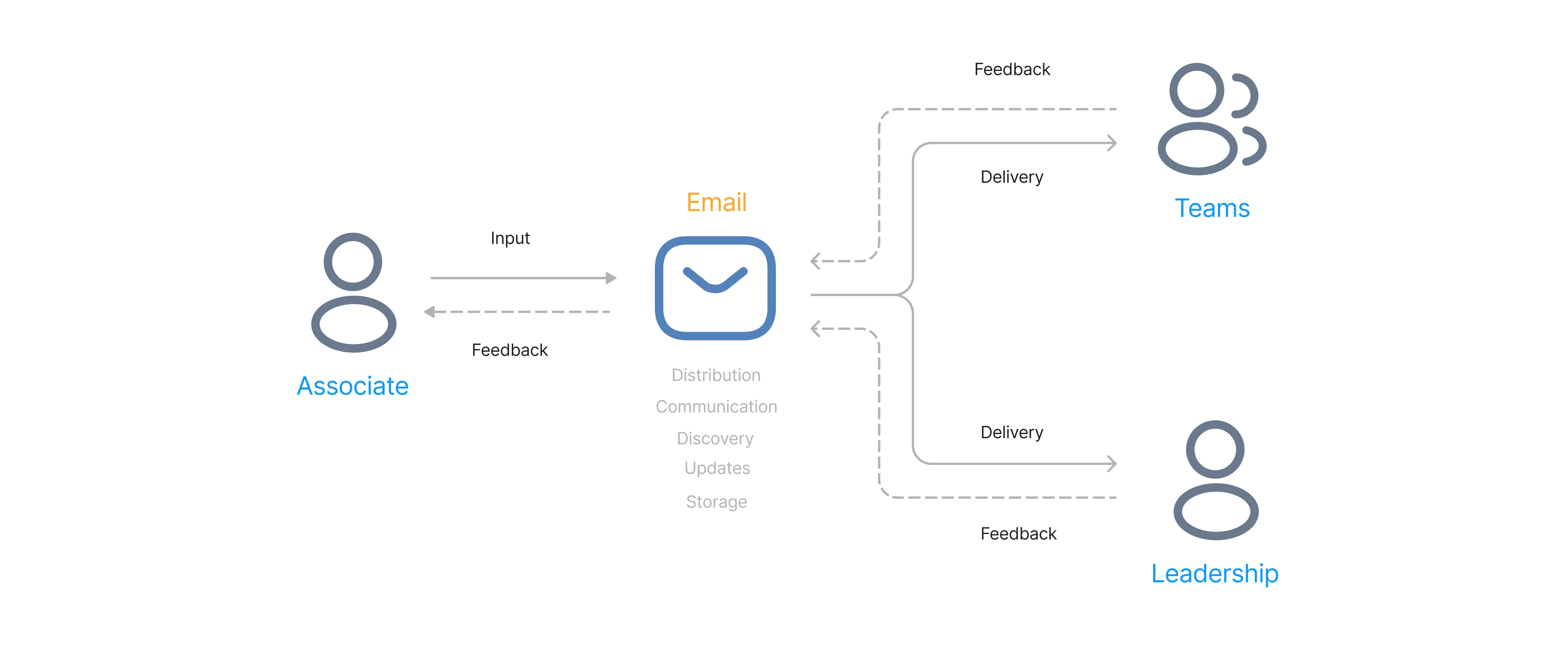
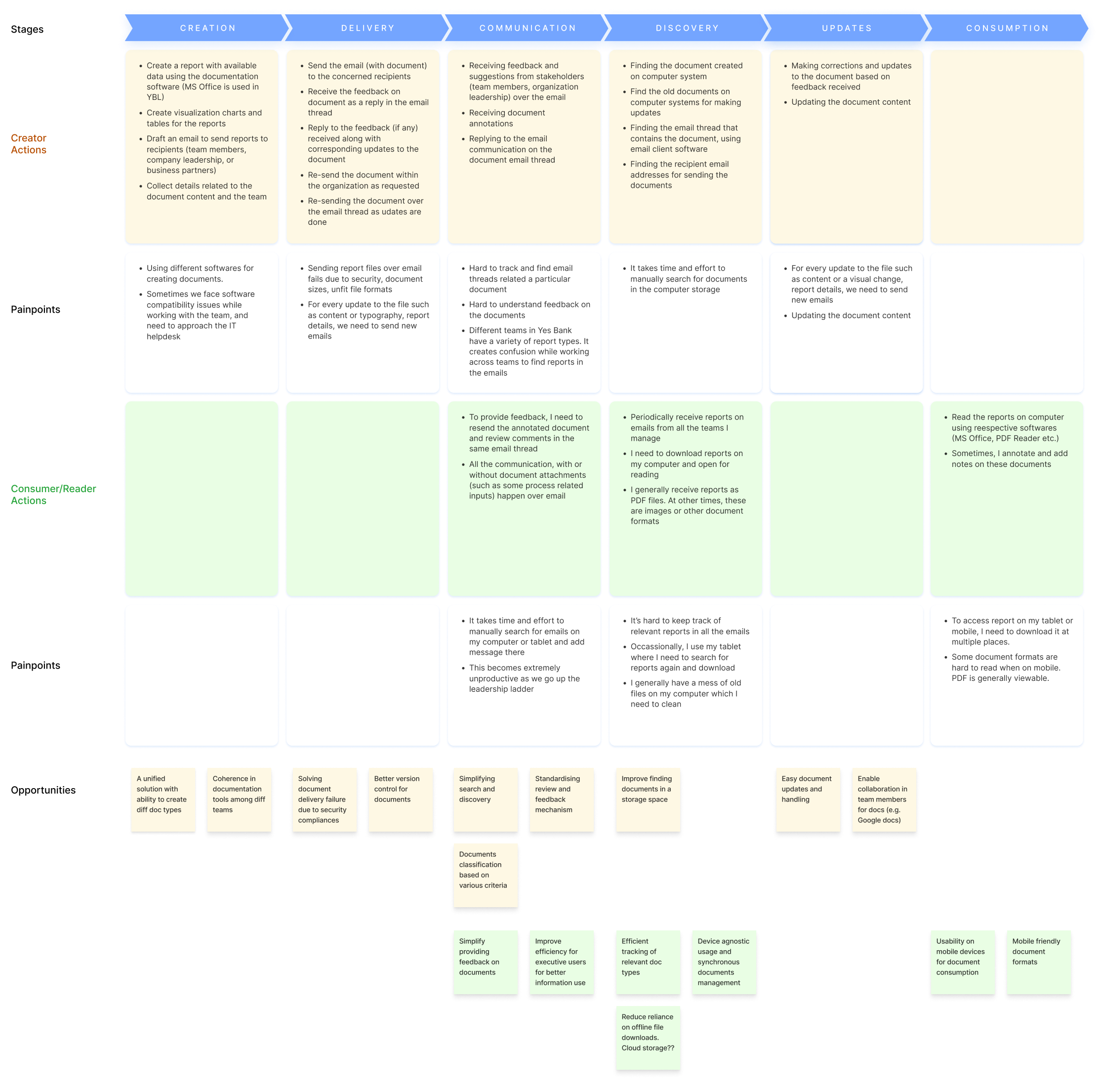
Product planning workshop
Following extensive discussions and careful consideration of user needs, business objectives, and available software solutions in the market, the team concluded that developing an in-house documentation solution would be the most effective approach.
This decision was driven by the desire to address the existing problems and maximize long-term optimization of business resources. By creating our own solution, we can tailor it specifically to meet our unique requirements, ensuring a more efficient and sustainable outcome.
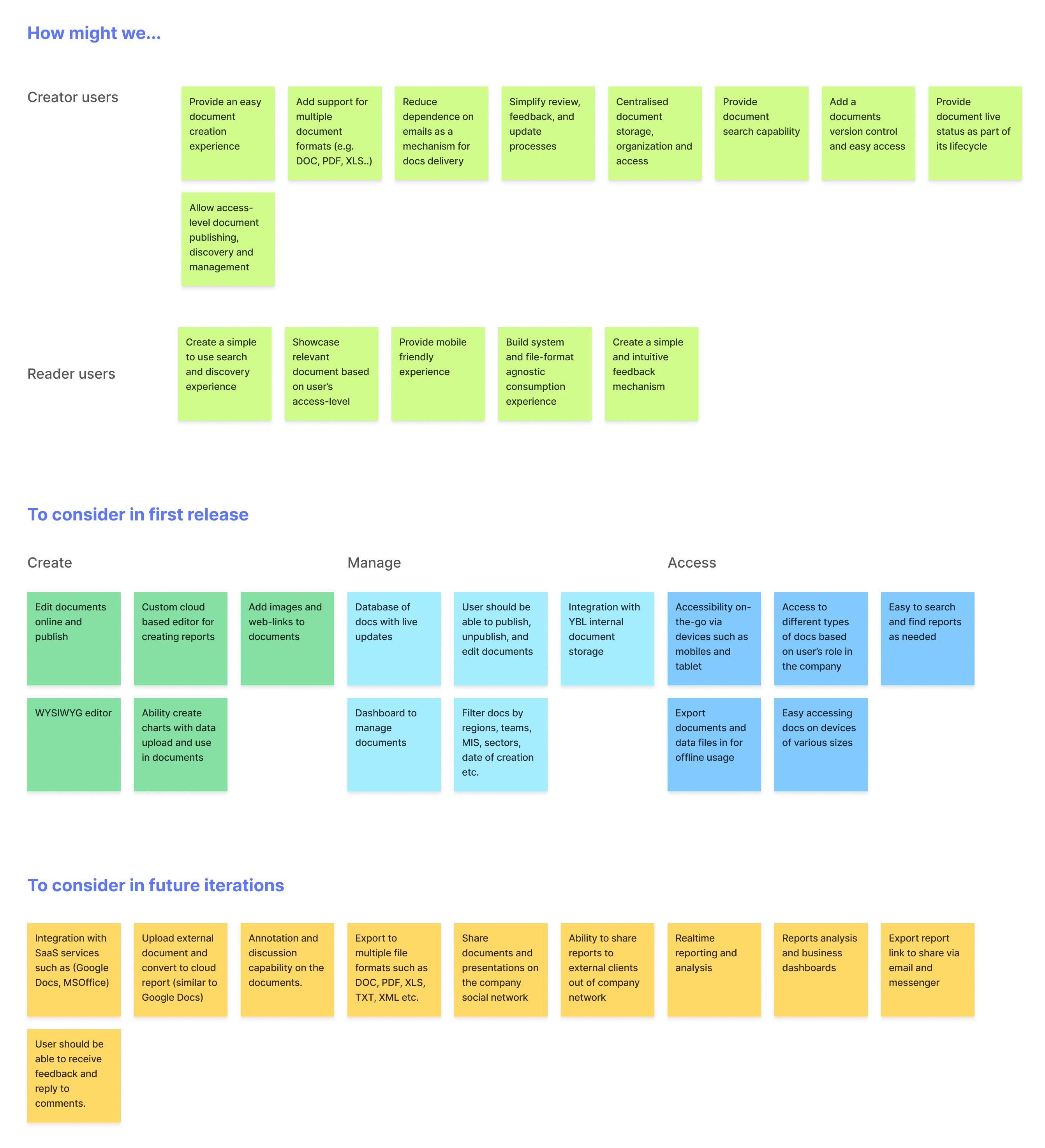
Building flows and information architecture
Based on extensive discussions with stakeholders and a clear understanding of the design approach, the decision was made to develop a web-based documentation experience for Yes Bank employees and management. This solution aims to be scalable across all Yes Bank entities and incorporates an architecture that allows for seamless integration of additional tools in the future.
To ensure a streamlined user experience, we divided the system flows and structure into two interconnected parts, aligning with the needs of two distinct user types. Each user will have access to system components based on their respective access levels, enhancing security and providing a tailored experience for different user groups.
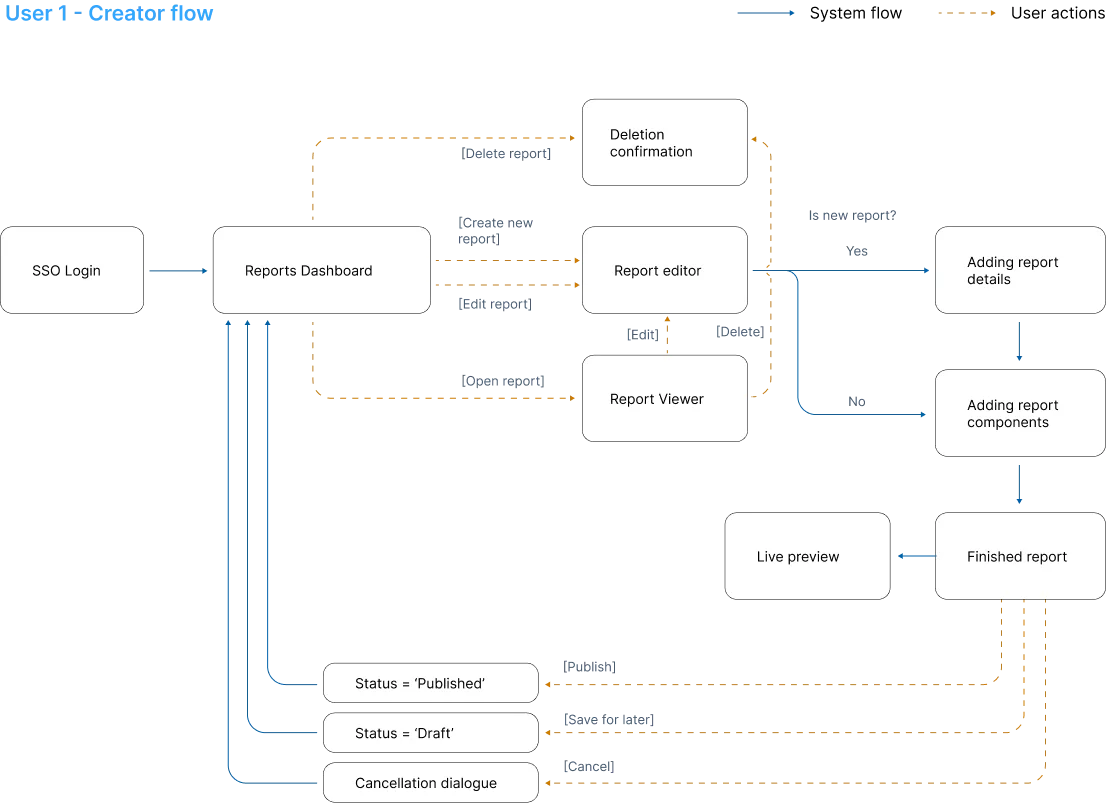

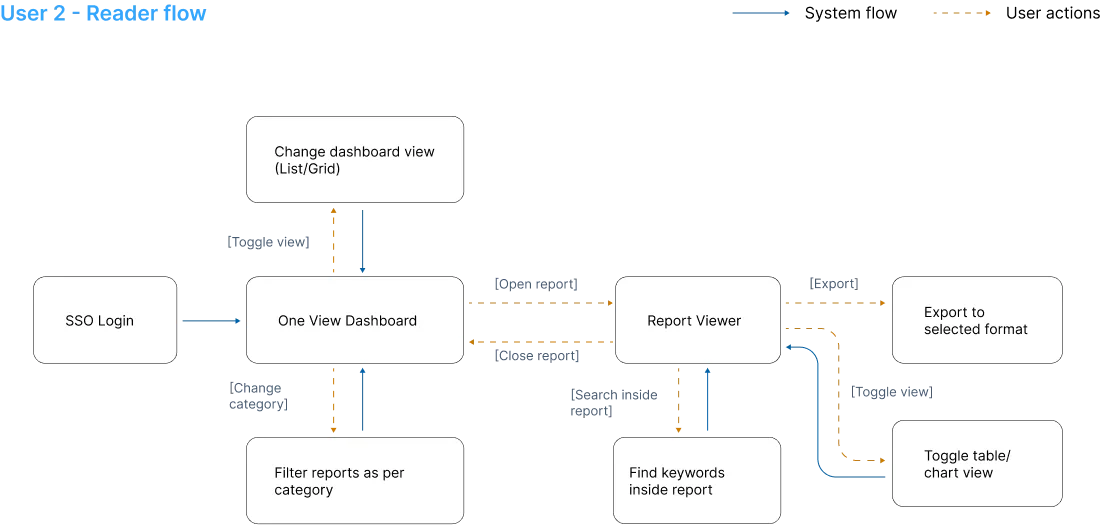
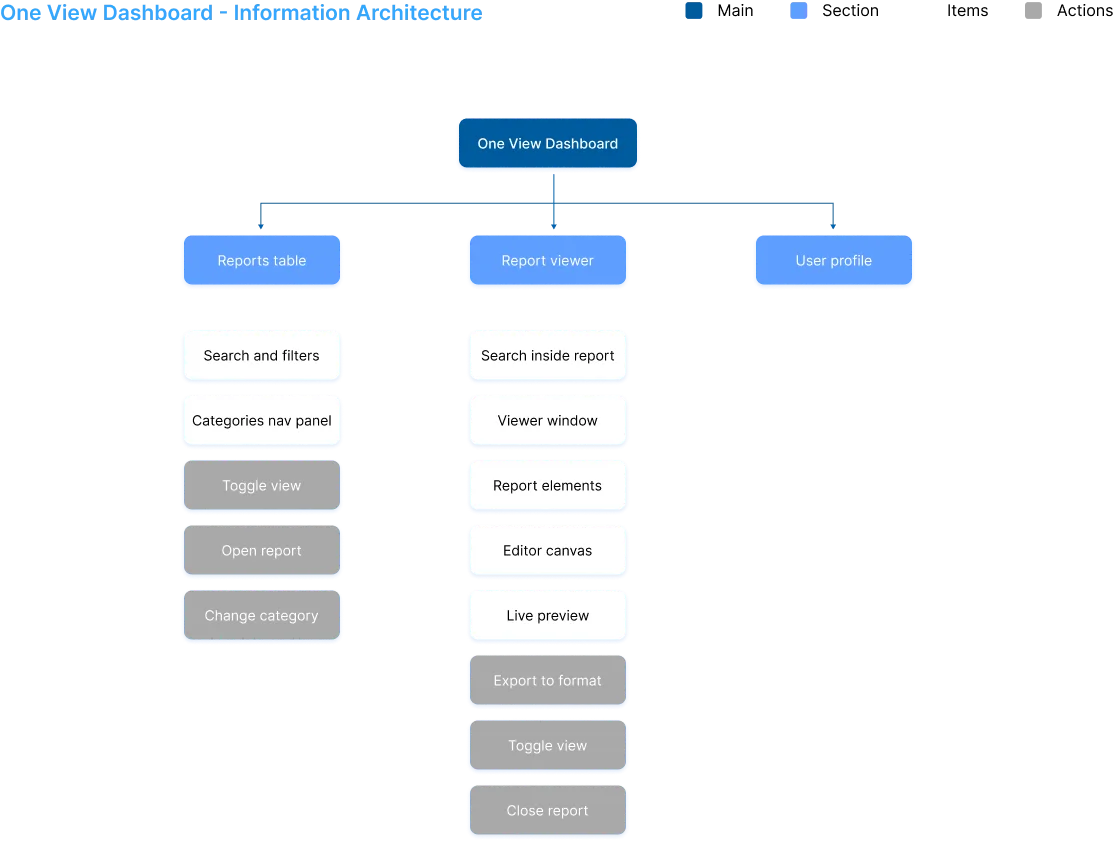
Low fidelity wireframes
Using the task flows and information architecture as a foundation, we created design layouts and sketched out screens for the system. By building keyframes, we were able to expedite stakeholder reviews and gather valuable feedback on the system elements.
This iterative process allowed for efficient collaboration and ensured that the system design aligns with stakeholder expectations.
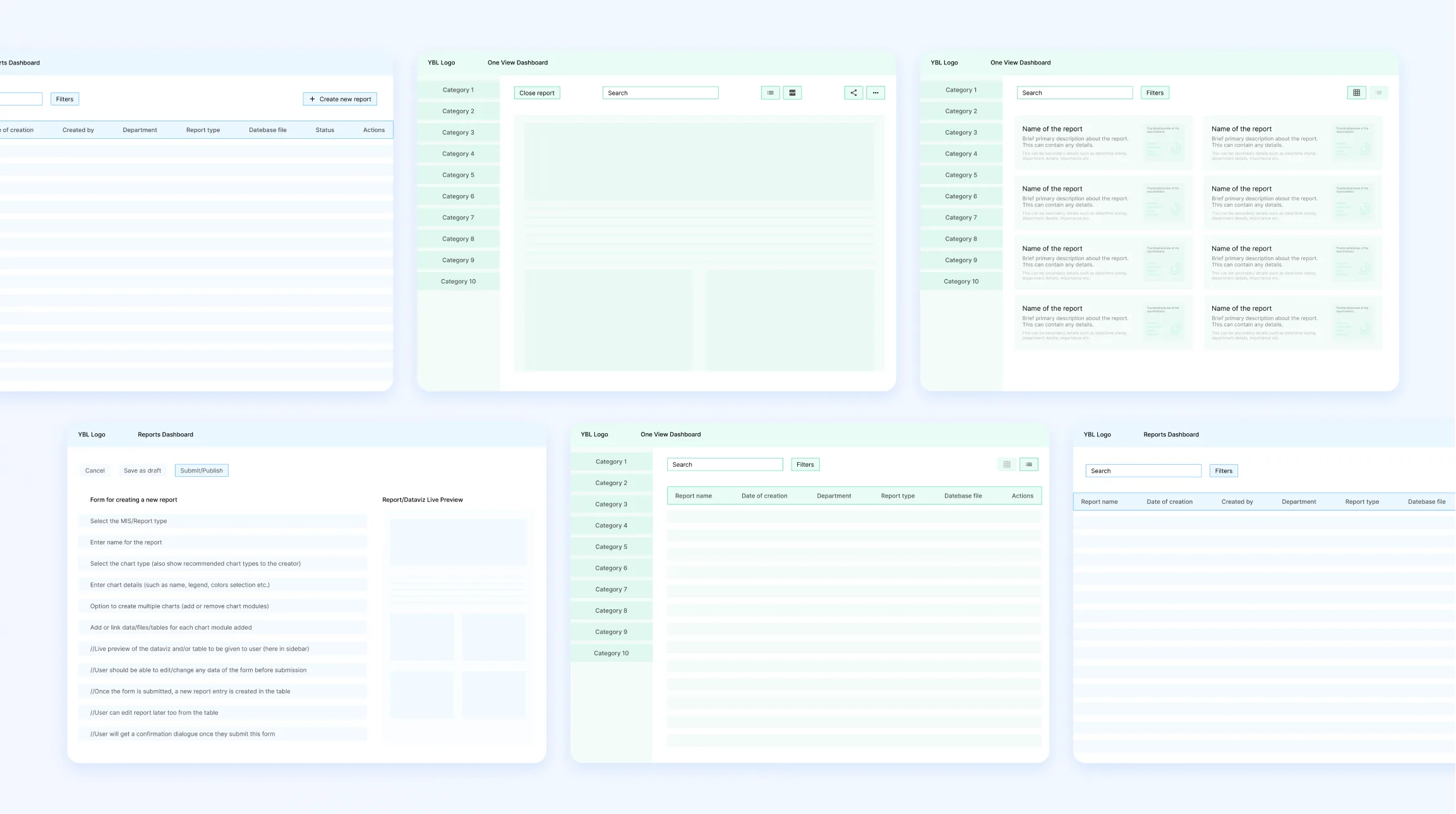
Creator dashboard UI
Yes Bank employees have the capability to generate reports using the existing tools and share them with relevant team members and company leadership. The Reports Dashboard serves as a centralized repository, showcasing the database of all created reports.
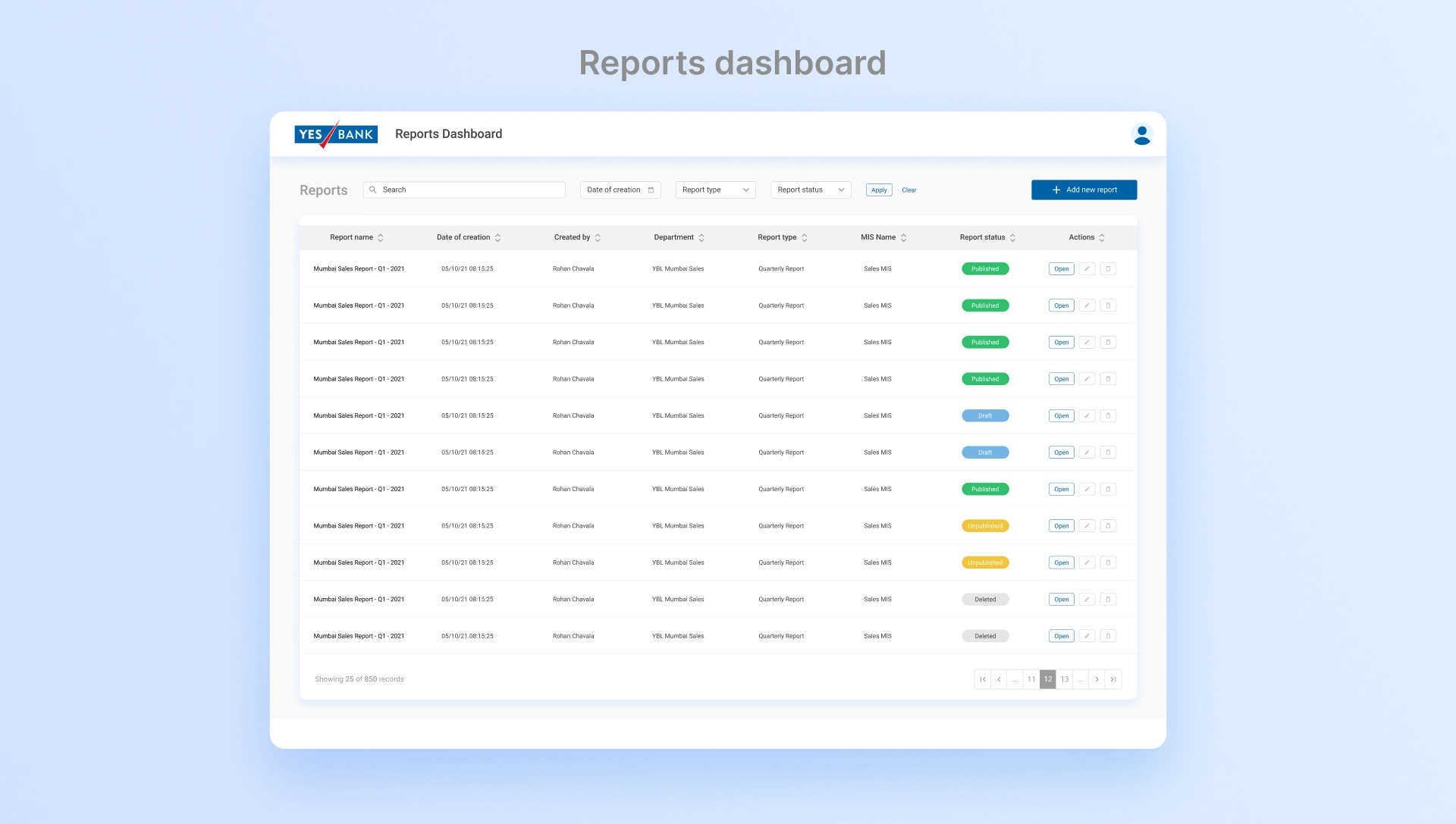

Creator flow interactions
Users have the ability to start a new report creation process by simply clicking on the designated button located on the Reports Dashboard. This action will redirect them to the editor window, where they can utilize the provided tools and live preview to compose the report. Once completed, the report can be published within the system, making it accessible for others to consume.
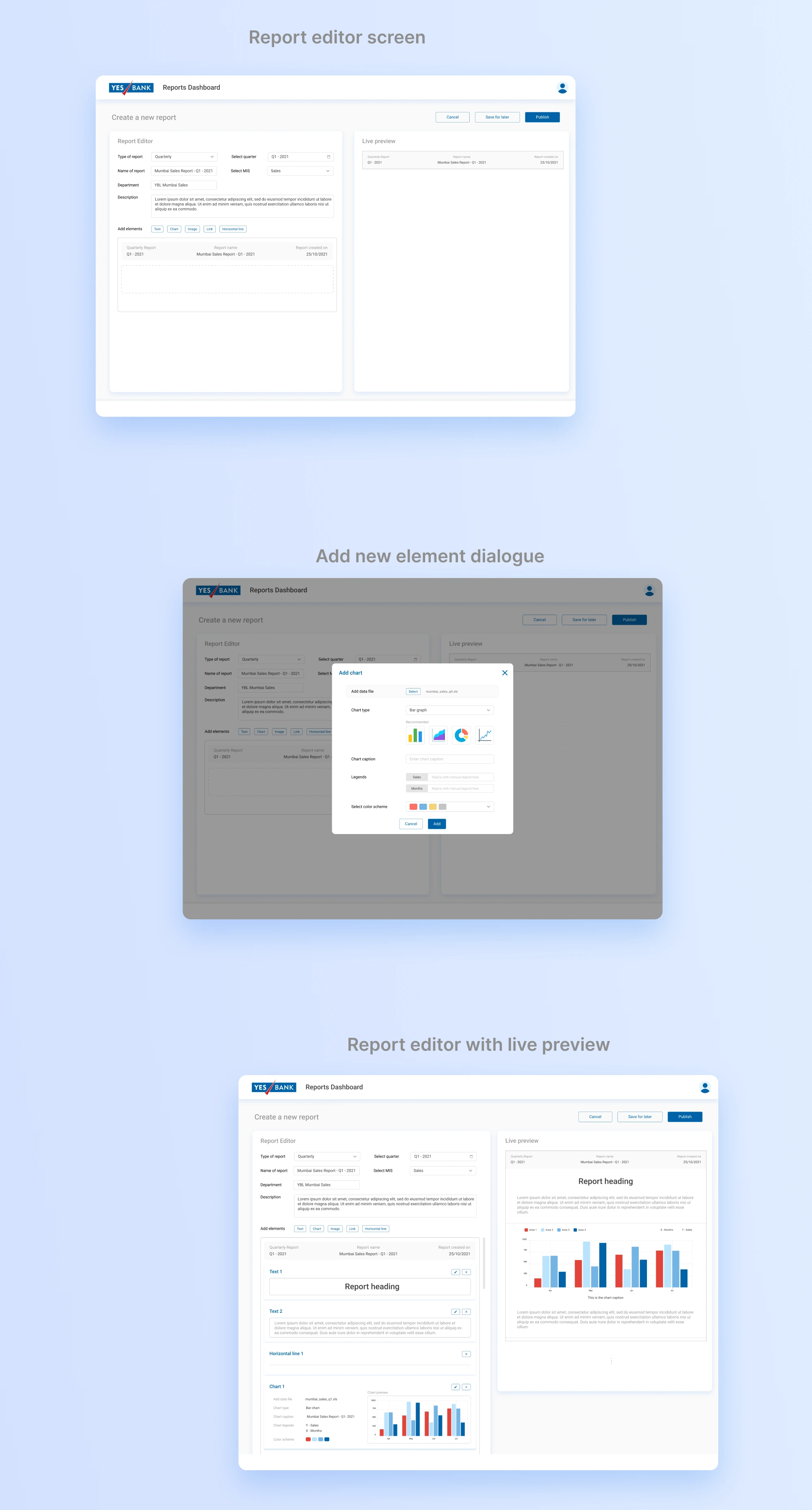
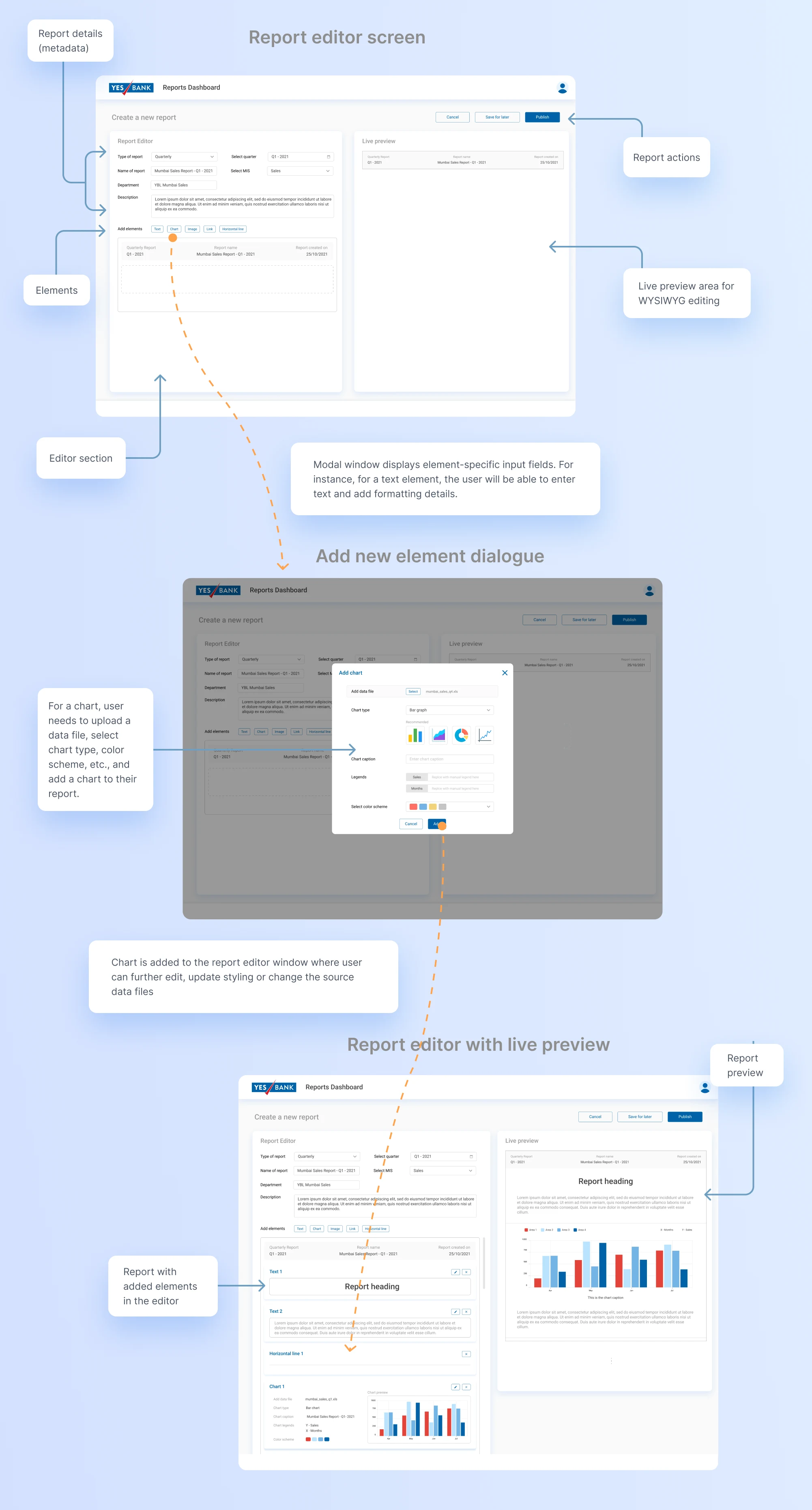
Reader Dashboard UI
For the initial version, the OneView Dashboard is designed specifically for company leadership and management-level employees to conveniently access the reports generated by the employees. The primary objective behind this development was to streamline the process of report consumption and enhance overall process flexibility.
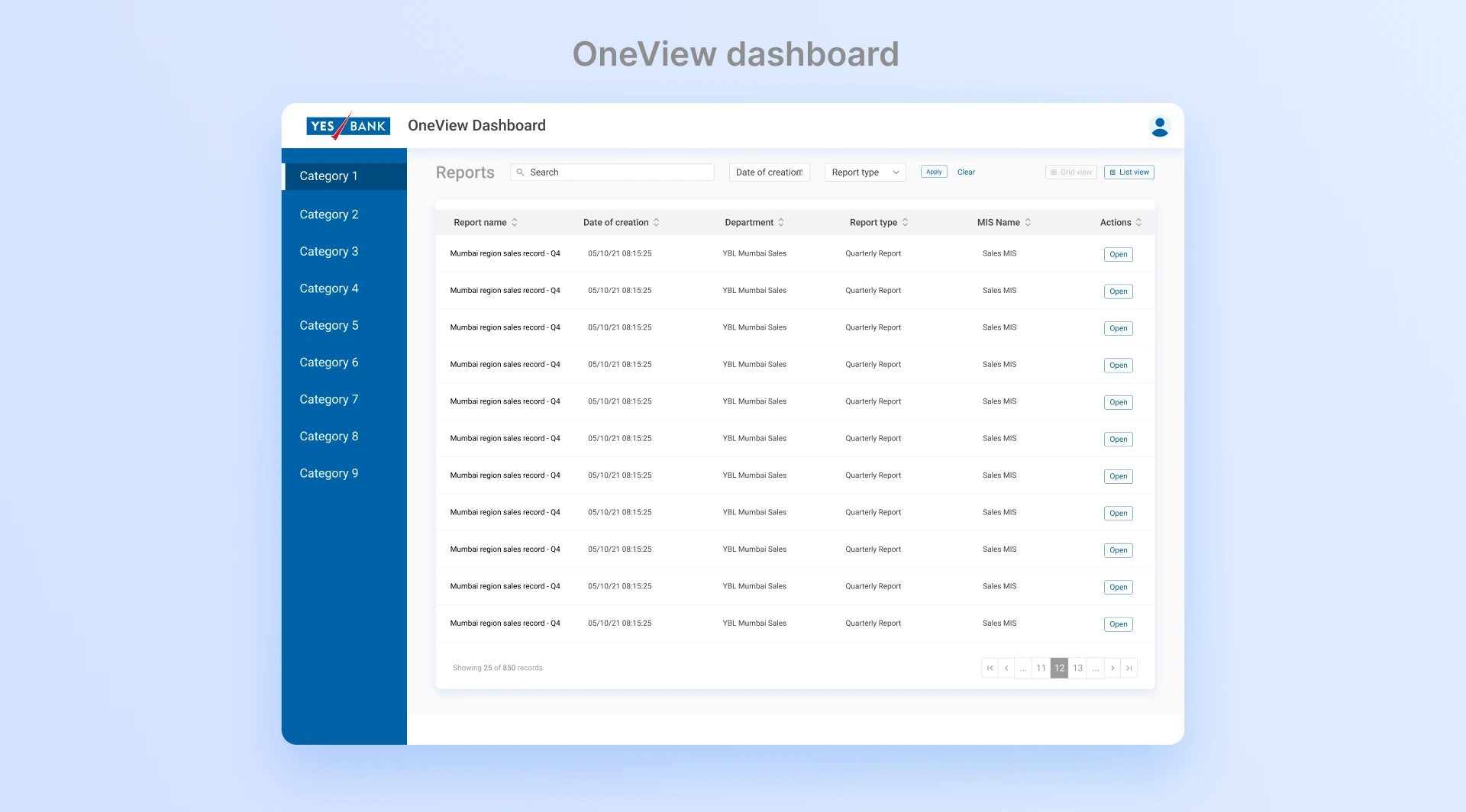
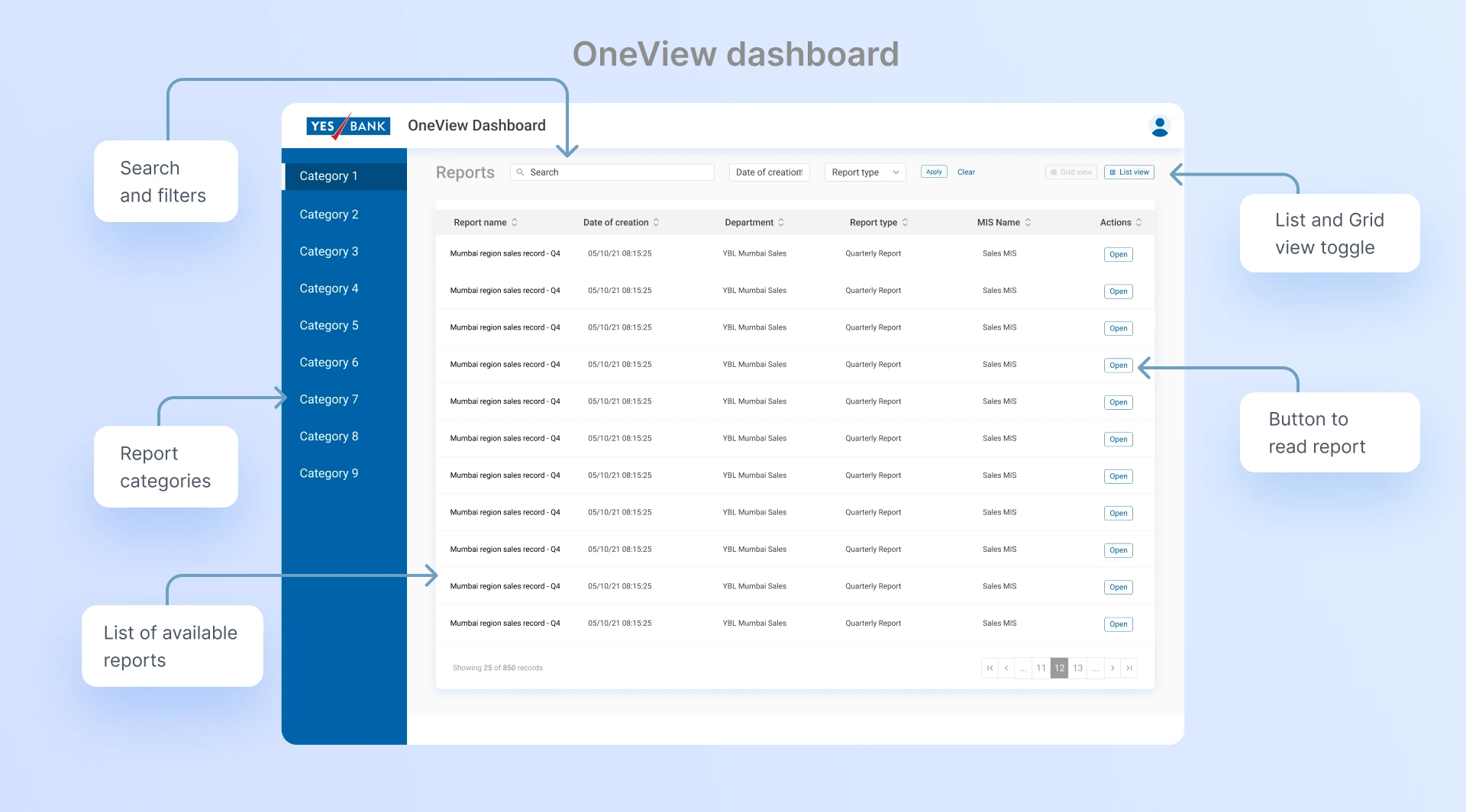
Reader flow interactions
The implementation of the OneView Dashboard facilitates easy access to reports for company leadership and management-level employees. The primary objective is to enhance workflow flexibility and simplify the process for accessing reports.
By providing a centralized platform, we aim to streamline report management and make it more user-friendly.

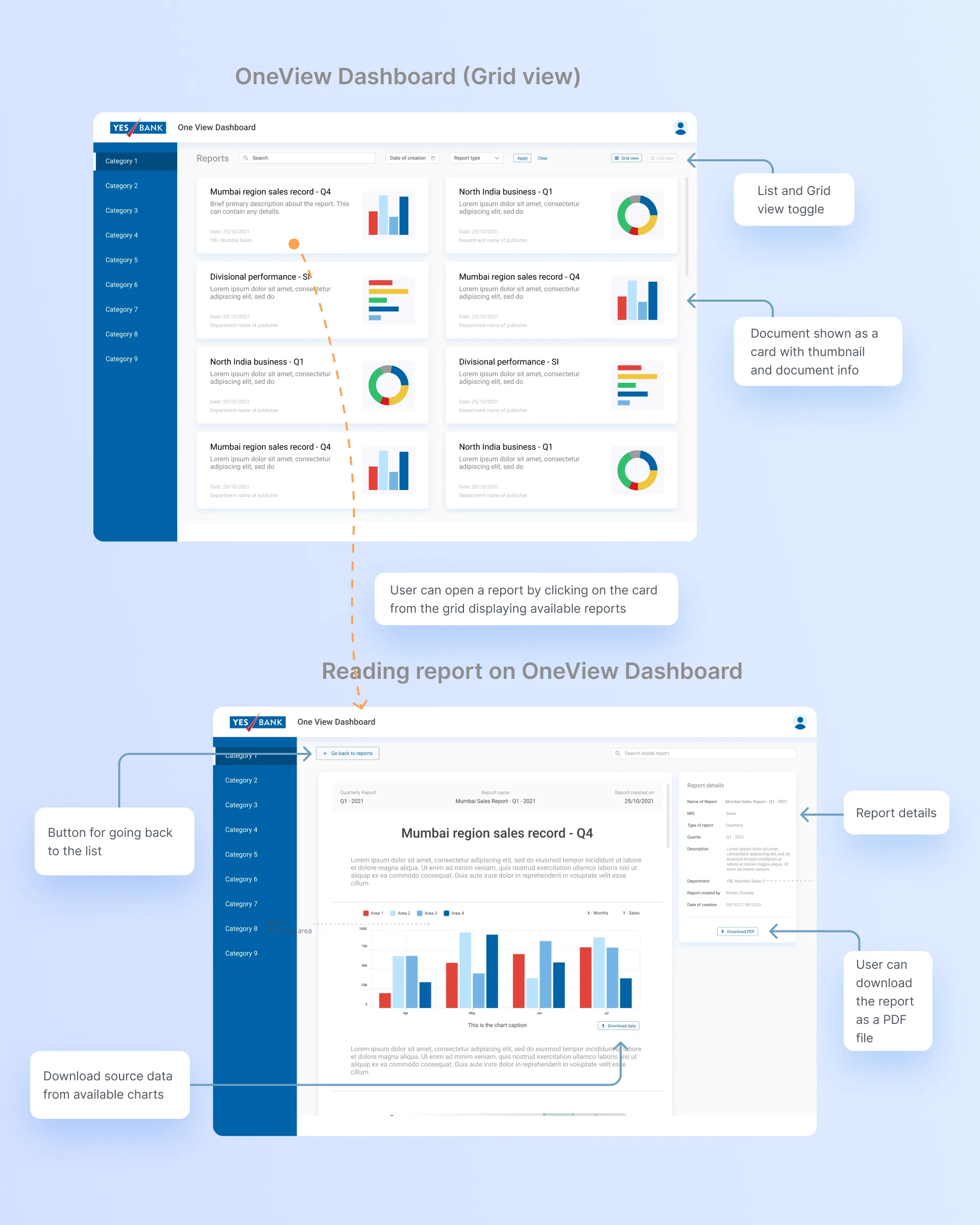
Responsive designs for Mobile
All designs for the web application have been meticulously created to ensure responsiveness across various device sizes, offering users utmost flexibility and accessibility. This approach guarantees a seamless user experience, regardless of the device they use to access the application.
For the initial release, document creation and editing will be limited to large-size displays like desktop computers. However, users will have the ability to read and manage documents on mobile devices.
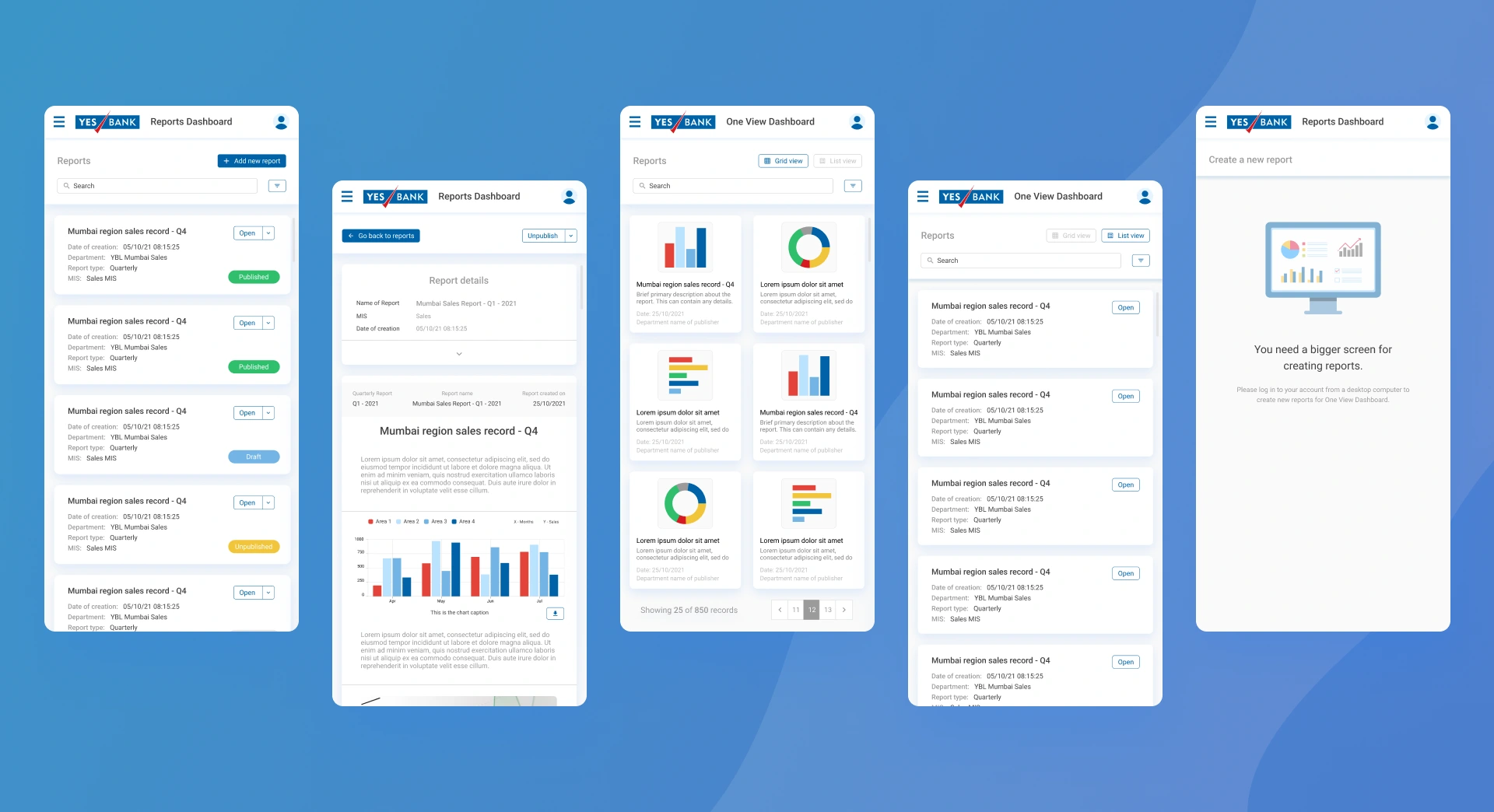
Starting a Design System
The development of a visual design and components library has been initiated, with the long-term goal of creating a comprehensive Design System for Yes Bank applications. This Design System will serve as a unified framework for the suite of digital products that are planned for future release.
By establishing a scalable design foundation, we aim to ensure consistency and efficiency across all Yes Bank applications, delivering a cohesive user experience to our customers.

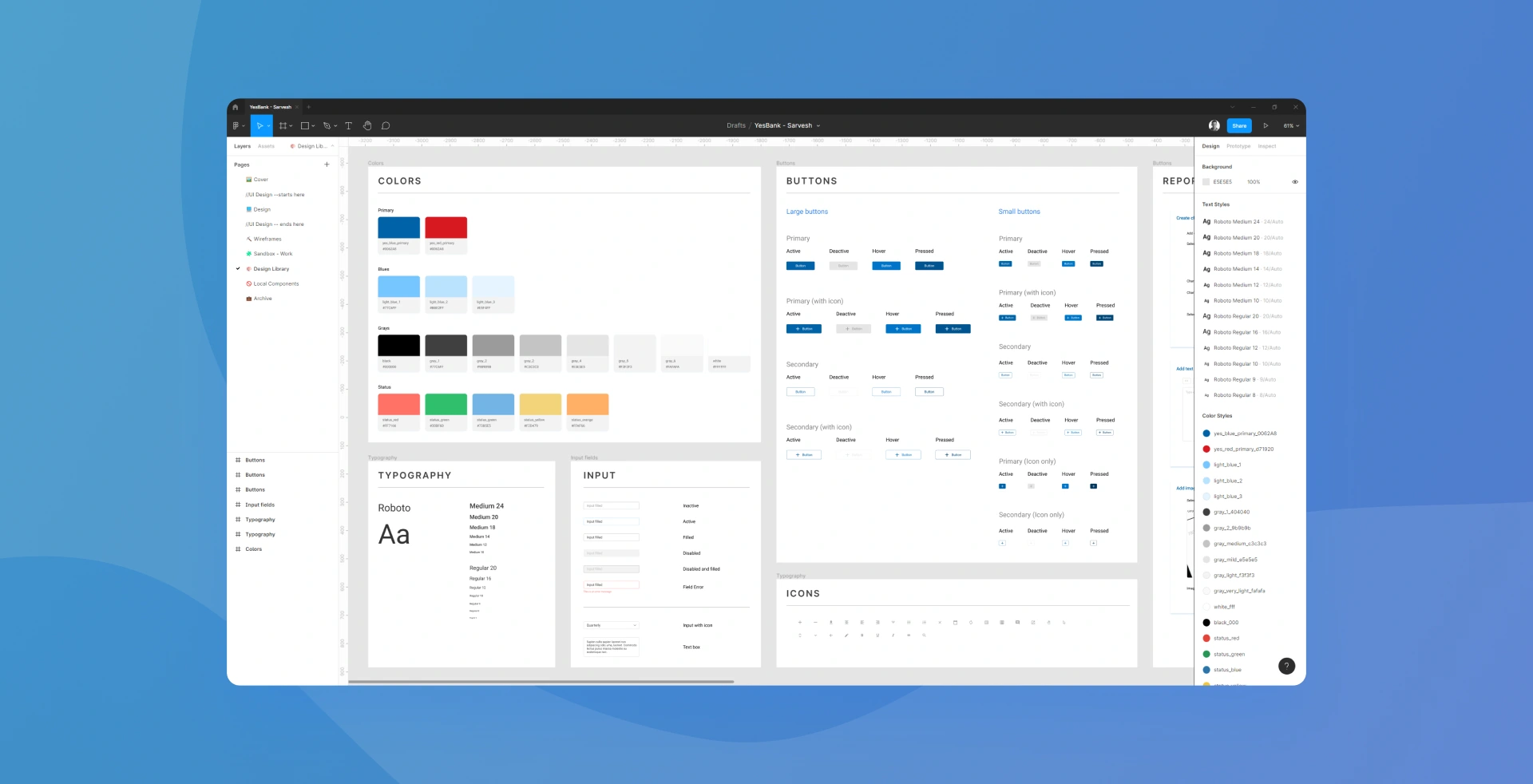
How will it impact?
The product is scheduled to be launched in 2022 following thorough testing and incorporating user feedback. Given the extensive scale of the business and the diverse range of stakeholders, its implementation will have a substantial impact on daily operations.
The product aims to deliver several key benefits, including:
Improved visibility of operations
The platform will provide enhanced visibility into various operational aspects, enabling stakeholders to have a comprehensive understanding of the business processesFacilitated forecasting and decision-making
Stakeholders will have access to tools and data that will support better forecasting and informed decision-making, leading to improved strategic planningConvenient access to reports and analytics
It will ensure the seamless availability of reports and KPI analytics, enabling stakeholders to access information conveniently and make data-driven decisions